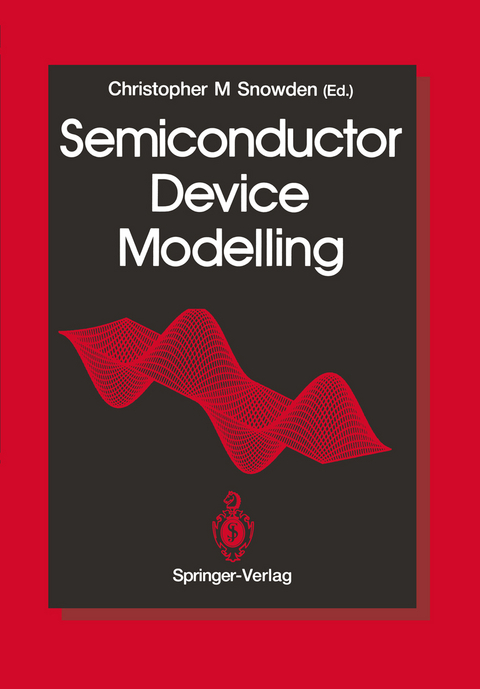
Semiconductor Device Modelling
Seiten
2011
|
Softcover reprint of the original 1st ed. 1989
Springer London Ltd (Verlag)
978-1-4471-1259-4 (ISBN)
Springer London Ltd (Verlag)
978-1-4471-1259-4 (ISBN)
Semiconductor device modelling has developed in recent years from being solely the domain of device physicists to span broader technological disciplines involved in device and electronic circuit design and develop ment. The rapid emergence of very high speed, high density integrated circuit technology and the drive towards high speed communications has meant that extremely small-scale device structures are used in contempor ary designs. The characterisation and analysis of these devices can no longer be satisfied by electrical measurements alone. Traditional equivalent circuit models and closed-form analytical models cannot always provide consis tently accurate results for all modes of operation of these very small devices. Furthermore, the highly competitive nature of the semiconductor industry has led to the need to minimise development costs and lead-time associated with introducing new designs. This has meant that there has been a greater demand for models capable of increasing our understanding of how these devices operate and capable of predicting accurate quantitative results. The desire to move towards computer aided design and expert systems has reinforced the need for models capable of representing device operation under DC, small-signal, large-signal and high frequency operation. It is also desirable to relate the physical structure of the device to the electrical performance. This demand for better models has led to the introduction of improved equivalent circuit models and a upsurge in interest in using physical models.
1. Review of Semiconductor Device Physics.- 2. Classical and Semiclassical Models.- 3. Numerical Techniques — Finite Difference and Boundary Element Methods.- 4. Numerical Techniques — The Finite Element Method.- 5. Gallium Arsenide versus Silicon — Applications and Modelling.- 6. Physical Models for Silicon VLSI.- 7. Physical Models for Compound Semiconductor Devices.- 8. Modelling of Semiconductor Laser Diodes.- 9. Equivalent Circuit Models for Silicon Devices.- 10. High Frequency Equivalent Circuit Models.- 11. Modelling of Noise Processes.- 12. Monte Carlo Modelling Techniques.- 13. Quantum Transport Modelling.- 14. Computer Simulations.- 15. Practical Aspects of Device Modelling.
| Mitarbeit |
Assistent: Roel Baets, John Barker, Joseph A. Barnard, Trevor M. Barton |
|---|---|
| Zusatzinfo | VIII, 259 p. |
| Verlagsort | England |
| Sprache | englisch |
| Maße | 170 x 244 mm |
| Themenwelt | Informatik ► Theorie / Studium ► Künstliche Intelligenz / Robotik |
| Mathematik / Informatik ► Mathematik ► Angewandte Mathematik | |
| Technik ► Elektrotechnik / Energietechnik | |
| Technik ► Maschinenbau | |
| Technik ► Nachrichtentechnik | |
| ISBN-10 | 1-4471-1259-8 / 1447112598 |
| ISBN-13 | 978-1-4471-1259-4 / 9781447112594 |
| Zustand | Neuware |
| Haben Sie eine Frage zum Produkt? |
Mehr entdecken
aus dem Bereich
aus dem Bereich
was sie kann & was uns erwartet
Buch | Softcover (2023)
C.H.Beck (Verlag)
18,00 €
von absurd bis tödlich: Die Tücken der künstlichen Intelligenz
Buch | Softcover (2023)
Heyne (Verlag)
20,00 €


